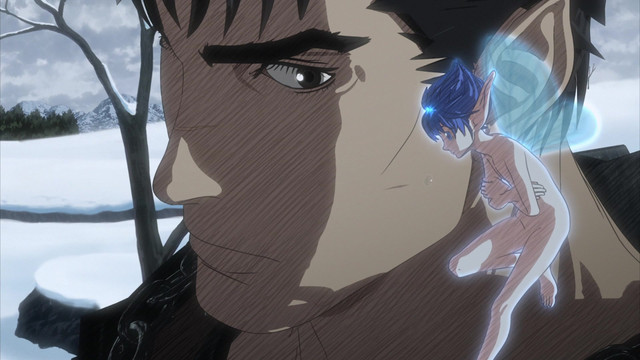
For the past decade, a lot of anime, most notoriously the 2016 Berserk series, have taken the heat for applying cel-shading methods, and we can understand why. However, not only has the latest Berserk followed suit with this trend, so have the likes of Ensemble Stars, Kouya Kotobuki no Hikoutai, Ultraman and Kengan Ashura. We’re not going to disagree with the criticisms of the techniques but regardless, we feel that we need to give this form a chance and allow us to explain why.
It’s Still Young
While this form of animation dates back to video games with Jet Set Radio on the Dreamcast and Fear Effect on the original PlayStation, it has been successful in the video game genre for its own reasons, especially with Okami and Breath of the Wild. In the world of anime, Berserk has gotten a negative reception. It’s going to be hard to plead with fans to cut it some slack, but we can’t deny that the techniques are still in its infancy. Every form of special effects in its first stages aren’t going to age well, which is the unfortunate reality with CG. When you look at when CG slowly became the norm from the 1990s, you can understand how its largely changed these past 25 years. Take for example, look at how a dog is animated in the first Toy Story movie, and how a dog is animated in the fourth installment to get a general idea of how much it has evolved.
Not only that, when you look at Reptile from the first Mortal Kombat movie or the Megazord in the 1995 Power Rangers movie, they’re undeniably a laughing stock, but they’re products of their time. Berserk unfortunately represents that respective stage in regards to cel-shading techniques in anime. Considering that a new anime was 20 years in the waiting and with its on-going manga being excellently received, we sympathize with long-time Berserk fans as to why they don’t want their beloved series used as a guinea pig for such techniques that had yet to advance. If CG can advance, then so can cel-shading!
It Has Been Advancing
As a matter of fact, cel-shading has been slowly advancing in the last few years. Granted it still has some things to work on, but it’s all a matter of knowing your craft and experimenting with what works and what doesn’t work. Unfortunately, that’s how life, business, and art all work. It’s all a matter of just keep on trying. With 2019 releases such as Ultraman and Kengan Ashura, while they do have their respective flaws (what form of art doesn’t?), it does demonstrate how the techniques have progressively evolved in a short amount of time.
When you look at Ultraman, it’s all about proper framing, lighting and scaling, which is very true with film as a whole. Look at the original Jurassic Park movie and the latest installment, Fallen World. When you compare both films, the original film knew how to properly frame and pan to convey the scale and despite technology evolving, this technique unfortunately went out of practice due to the ratios of how the movies are filmed in.
Finding the Right Technique
When you look at the 2016 Berserk series, the colors of the skin and clothing were way too bright, and didn’t reflect the shadowing and dimmer lighting, which is what the original manga does a great job of using with its heavy inking. Plus, how action sequences were framed and panned by being way too close and animated from a bottom perspective further contributed to why it has been criticized. When you get to Ultraman and Kengan Ashura, it effectively uses scale, range, and lighting to make its cel-shading look a bit better. With Ultraman, it knows how to use proper range and scale to utilize its style while Kengan Ashura excellently knows how to use light and shadowing.
In some instances, it depends on the character design and style to make a certain art form work. Berserk’s rough foundation isn’t easy to transition into cel-shading because on how the original manga relies heavily on inking and pure detailed drawings. When it comes to something with simpler and more generic art and designs such as Kouya Kotobuki no Hikoutai, it’s much easier to apply that style with the right lighting and detail, which isn’t as demanding as Berserk’s.
Final Thoughts
Though CG is still a new form, by no means is it still a recent thing. Cel-shading in anime goes as far back to 2003’s Freedom OVA series. A good number of anime have masterfully mixed cel-shading and traditional animation such as the final seasons of Initial D where the races are cel-shaded. In Macross Delta, the mechs are cel-shaded to make them stand out and yet finds a way to stay balanced with the traditional animation. If traditional animation can do it, eventually so will cel-shading.
As to why it works with something like video games like in Breath of the Wild, yes, it’s a different medium, but you have to keep in mind that video games not only have different budgets, developers in that industry are given more production time to make a single game in comparison to the anime industry to make a series or feature film to make sure everything is running smoothly. While beloved hits like Berserk are unfortunate victims to the “early stages of new techniques,” thanks to Berserk, the medium can and is going to evolve into something greater for the industry as a whole.
Recommended Post


